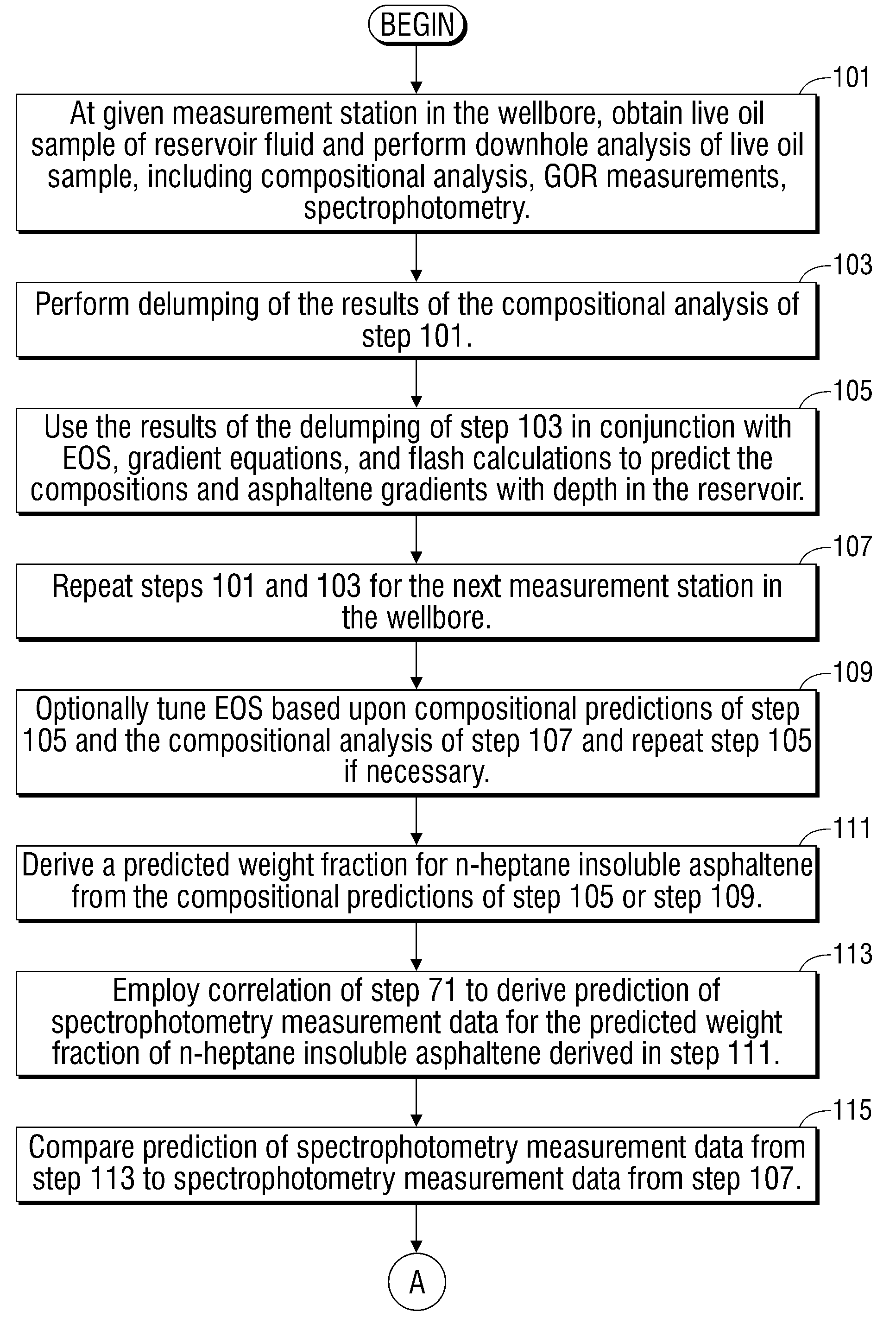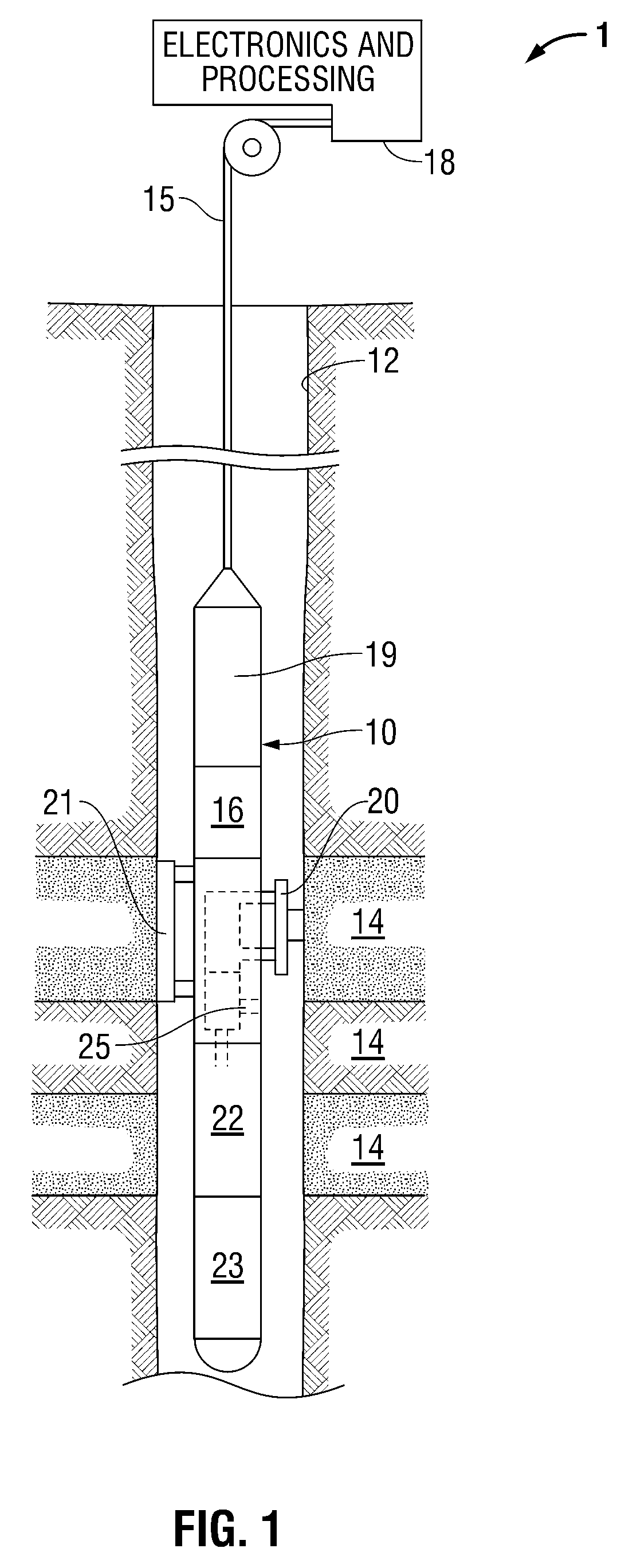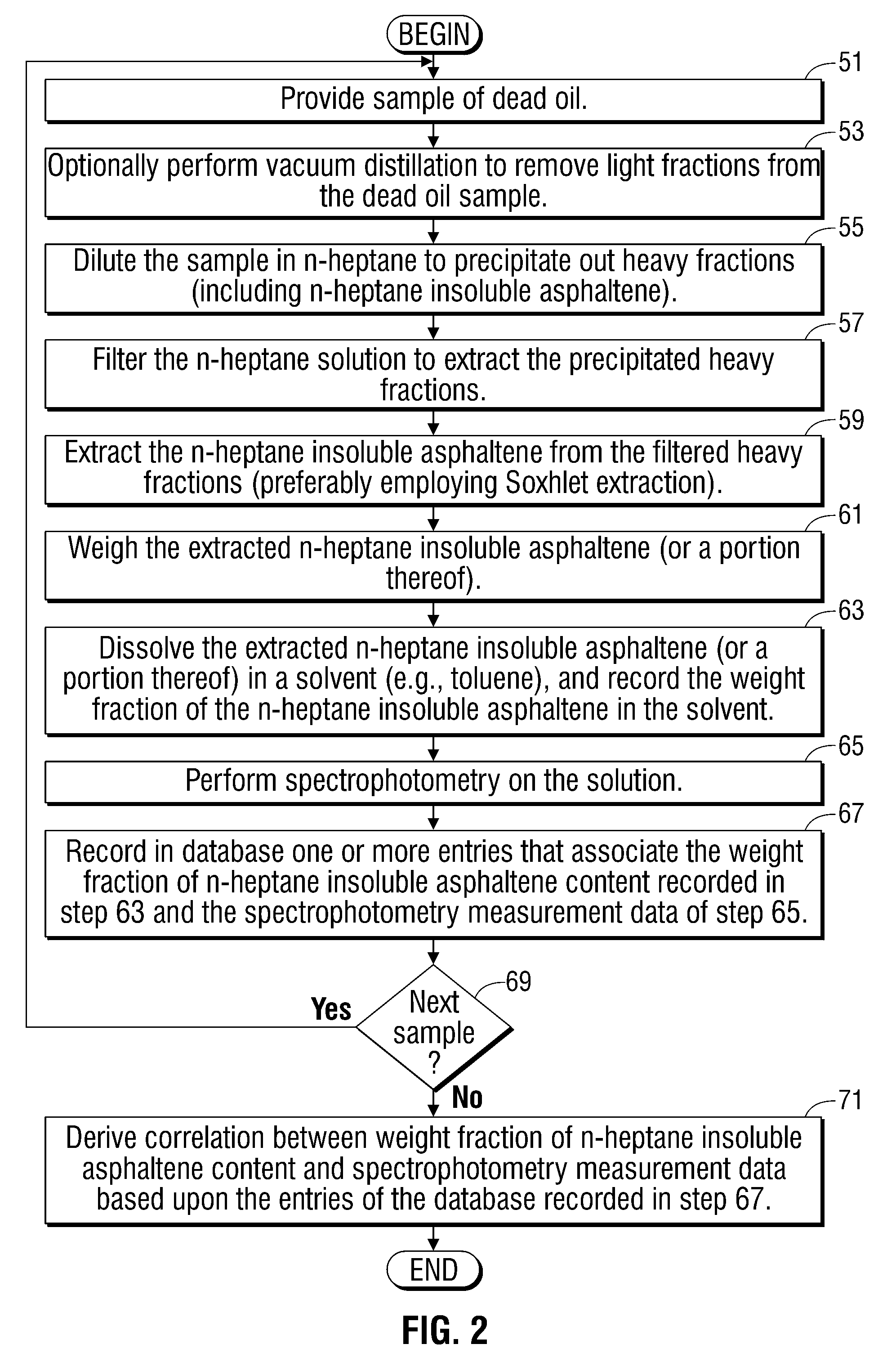Methods and apparatus for analysis of downhole asphaltene gradients and applications thereof
a technology of asphaltene gradient and downhole, applied in the field of methods and apparatus for characterizing petroleum fluid, can solve the problems of difficult to retain samples, difficult to ascertain the chemical structure of asphaltene, and often heterogeneous or compartmentalized fluids in the reservoir, so as to accurately detect compartmentalization and/or non-equilibrium hydrocarbon distribution
- Summary
- Abstract
- Description
- Claims
- Application Information
AI Technical Summary
Benefits of technology
Problems solved by technology
Method used
Image
Examples
Embodiment Construction
As used herein, the term “dead oil” refers to petroleum fluid at sufficiently low pressure that it contains no dissolved gas, or a relatively thick petroleum fluid or residue that has lost its volatile components.
As used herein, the term “live oil” refers to petroleum fluid containing dissolved gas in solution that may be released from solution at surface conditions.
FIG. 1 illustrates an exemplary petroleum reservoir analysis system 1 in which the present invention is embodied. The system 1 includes a borehole tool 10 suspended in the borehole 12 from the lower end of a typical multiconductor cable 15 that is spooled in a usual fashion on a suitable winch (not shown) on the formation surface. The cable 15 is electrically coupled to an electrical control system 18 on the formation surface. The tool 10 includes an elongated body 19 which encloses the downhole portion of the tool control system 16. The elongated body 19 also carries a selectively extendable fluid admitting assembly 20 ...
PUM
 Login to View More
Login to View More Abstract
Description
Claims
Application Information
 Login to View More
Login to View More - R&D
- Intellectual Property
- Life Sciences
- Materials
- Tech Scout
- Unparalleled Data Quality
- Higher Quality Content
- 60% Fewer Hallucinations
Browse by: Latest US Patents, China's latest patents, Technical Efficacy Thesaurus, Application Domain, Technology Topic, Popular Technical Reports.
© 2025 PatSnap. All rights reserved.Legal|Privacy policy|Modern Slavery Act Transparency Statement|Sitemap|About US| Contact US: help@patsnap.com



